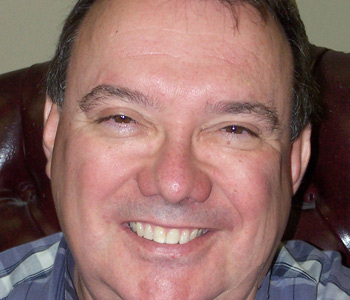Michael B. Katz
Why Don't American Cities Burn?
University of Pennsylvania Press
240 pages, 6 x 9 inches
ISBN 978 0812243864
Why Don’t American Cities Burn? is about the collision between urban transformation and rightward moving social politics.
A series of economic, demographic, and spatial changes have transformed American cities, producing an urban form unlike any other in history. At the same time, American politics has been moving right. Federal and state governments have been cutting the safety net, reducing aid to cities, attacking trade unions, allowing the value of the minimum wage to erode, and, whenever possible, applying market-based solutions to public business.
The coexistence of these trends produces a collision with ordinary people caught in the middle. The evidence is all around us in rising rates of poverty and homelessness, declining real wages, decayed inner cities, failing public services, home mortgage foreclosures, high unemployment, and mass incarceration.
What is amazing is how quietly all this happened. In contrast to the 1960s and early 1970s, American cities did not burn. Until Occupy Wall Street in 2011, people did not take to the streets or mount massive protests at increased inequality and its sources. And, when in 2011 they did, the protests were remarkable for their non-violence. There was nothing in America like the spring of 2005 in France where riots broke out in about 300 cities.
Why did American cities not explode as they had forty or fifty years earlier?
The first answer is negative: the lack of civil violence did not mean that the conditions that sparked earlier riots had disappeared. For the most part, they persisted and in some instances worsened.
The second answer is that all violence has not disappeared. Rather, it has turned inward—away from collective protest and toward intrapersonal violence among residents of the nation’s de-industrialized cities. Why have black men unable to leave bleak inner-city neighborhoods vented their rage on one another and not, as they did forty or fifty years ago, on the agents and symbols of a politics, culture, and economy that exclude them from first-class citizenship?
The third answer is that a combination of three factors helped account for the near disappearance of civil violence: they are a shift in the ecology of power, the management of marginalization, and the incorporation and control of immigrants. By a shift in the ecology of power, I mean major changes in the demography of city populations, where they live, and who holds power. The management of marginalization refers to a whole series of new methods for managing or containing poor people that result in a depoliticization which makes collective action difficult. The incorporation and control of immigration points to the distinctive way in which the nation deals with its newcomers. Birth-right citizenship incorporates the second generation into citizenship, and naturalization remains relatively easy while fear of deportation works as a potent form of social control.
The book’s Prologue tells a story of murder and marginalization in the badlands of Philadelphia, a place where an explosive collision between urban transformation and rightward moving social politics has trapped residents in a devastated urban landscape with few sources of help. Two men found themselves locked in a mortal struggle over $5.00, and in the end one died. I was a juror for the murder trial that resulted.
This sad and awful story illustrated the interpersonal violence that had replaced the collective protests of the 1960s and early 1970s. The transformation of urban violence from collective to interpersonal, however, constitutes only one of the major issues addressed by this book. The first substantive chapter asks: What is an American city? It shows how economic, demographic, and spatial changes resulted in unique urban forms. It uses the idea of a “new domestic landscape” to illustrate dramatic change in the spatial ecology of suburbs. And it points to the variety of new metaphors deployed with only partial success to capture the new meaning of urban, city, and suburb.
The book also addresses the vexed question of African American progress. Looking back at the last half century, have the life prospects of African-Americans worsened, improved, or remained about the same? Powerful arguments have been advanced in favor of each position. The book contends that this is the wrong question.
Instead, I ask: In what ways have African American social structure changed? The second chapter points to two major trends. The first is differentiation, the division of African American social structure through the accumulation of many small and not so-small distinctions. The distance between Barack Obama and the men fighting to the death in North Philadelphia illustrates the outcome. The other trend is the emergence of a gender gap: on most measures of education, income, and occupation black women increasingly outpace black men.
Poverty is the subject of the fourth and final substantive chapter. (The third is the title chapter.) Have changes in ideas about poverty and strategies for its alleviation accompanied the transformation of American cities? I found a remarkable shift that I refer to as the transition from “underclass” to “entrepreneur.” In the 1980s, “underclass” was the term applied most often to inner-city minority populations. A term which referred more to behavior than to economic condition, underclass provided the latest iteration of the oldest trope about poor people: their division into the deserving and undeserving poor.
By the first decade of the twenty-first century underclass had become yesterday’s idea. Instead, from Bangladesh to New York, writers celebrated the entrepreneurial energy of poor people waiting for the spark of opportunity to transform their lives. Poverty entrepreneurs jettisoned the underclass idea and developed new techniques of poverty work based on market-based principles. The four most prominent were rebuilding markets in inner cities (the poor as consumers); microfinance (the poor as entrepreneurs); asset building (the poor as savers); and conditional cash transfers (the poor as rational actors). How effective were these new technologies? The jury remains out on each of them. Whether singly or together they can seriously dent poverty remains uncertain or, less charitably, doubtful. But they do represent a break with past ideas about poverty. The displacement of pathological stereotypes of the poor with images of competent entrepreneurs accumulating assets marks a new stage in poverty discourse and policy.
In the epilogue I raise a question which grows out of both the earlier chapters and my work as a teacher of urban studies. Both the political left and right tell a similar depressing story about the history of American cities after World War II. The facts are largely accurate and beyond dispute—many of them are in this book—but are they the whole story?
As it stands, the narrative of urban history is depressing, and it leaves students unsatisfied. They wonder whether making a difference is possible. This question leads me to believe we need a new urban narrative, one still true to the “facts” but wider in its frame and more inclusive. I see bits and pieces that can be used to build it. But constructing the new frame remains an unfinished task. It is, I suggest, the underlying task of progressive politics as well as of urban history.
If you come across this book in a bookstore, I hope you will browse the Prologue, “The Death of Shorty,” and that it will draw you in to the rest of the book. Even if it does not, the story provides a concrete, vivid illustration of all the book’s themes. It shows how complicated and interconnected the issues are, and it reminds readers that the historical and sociological material in the book refers to real people, human beings struggling to survive with some dignity on the mean streets of North Philadelphia and other American cities.
I would point readers, too, to the section on the “management of marginalization” in the title chapter. For it highlights aspects of everyday experience whose significance is easy to miss. And it limns modern techniques for keeping the peace in the face of persistent, and growing, inequality. This is an area in which America is a world leader.
If you pick up the book, please also browse the Epilogue and think about the wonderful quotation from the brilliant urbanist Anaya Roy with which the book ends. I want readers to understand what the book calls “the existential dilemma of urban studies” and enter the conversation about how we can shape a new narrative that energizes, not depresses, the bright young people who want to help build a better urban future.
I want readers to take away at least four things from this book.
- An understanding of urban transformation and its consequences. To comprehend the world in which we live we need to toss out older ideas of city, suburb, and urban. The exercise is not just intellectual. It is necessary if we are to develop policies to respond to the situation as it is, not as it was not so very long ago.
- An ability to criticize statements that attribute poverty to the failings of individuals. By this point in history, it should be clear that the attribution of poverty to personal defect along with the hoary idea of the undeserving poor are intellectually bankrupt and incapable of pointing the way to effective strategies for substantially reducing the unacceptable extent of poverty in America.
- An appreciation of the positive role of government and a healthy skepticism about the ability of privatization and policies based on market-models to solve major social problems. The denigration of government is one of the most corrosive public trends in recent American history. Its ugly consequences are all around us. Without strong, effective government, a vibrant, successful democracy is impossible.
- A willingness to reject the idea that there is no alternative. TINA, as the late Daniel Singer called the idea, is a powerful ideological control mechanism for disabling protest and creative thinking about possibilities for change and alternative policies. Alternatives always have existed, as they do today; the question is whether we have the imagination and will to make them happen.




We don't put paywalls. We don't distract you with ads. We don't sell your data.
Please help to keep this running!